Looking Back So We Can See Forward
In our previous two articles about the Suzuki Jimny light 4WD vehicle (Suzuki Jimny Part 1 and Suzuki Jimny Part 2) we talked about the early history of the Jimny, starting with the little Hope Star ON360 (not technically a Jimny) and then the LJ10, the first real Jimny. Both these little gems were air-cooled and had 360cc engines.
Although air cooling made these already very simple cars even simpler, it had some serious drawbacks: In a hot, hard slog up a long hill at low speed and high rev the little air-cooled engines could overheat and seize up. They were tough little units, however, and if you just waited till they had cooled down again, they would start right back up for you. O.K., I guess, but not ideal.
So Suzuki took that little engine and put a water jacket on it, hooked it up to a radiator and….TA DA!….water cooling.
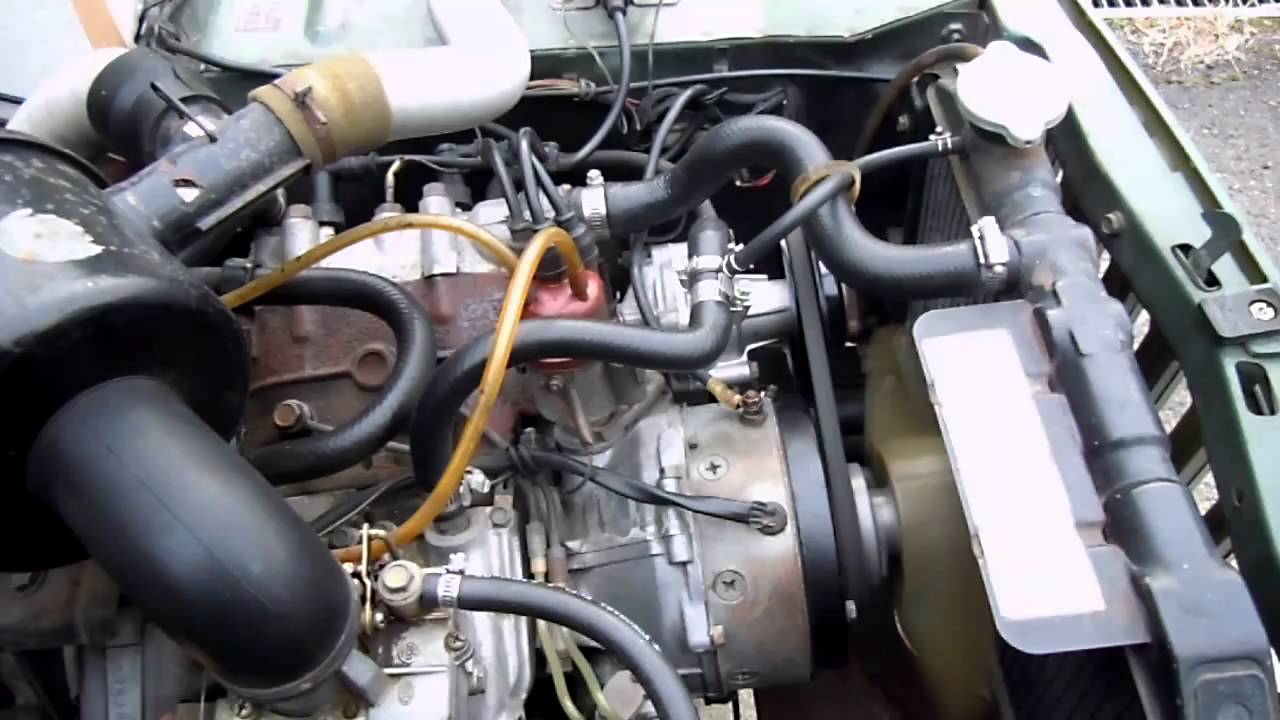
(There’s short little 35 second video on Youtube showing this little baby running and revving.)
Two-Stroke Paradise
And, with water cooling, everyone lived happily ever after, right? Well, not really. You see, with the Jimny LJ20, the overheating problem was solved but the power problem was not. A dealer I know in Gotemba City (not far from where we are now) had a nice, clean LJ20 front and center on display in his lot a little while back and I asked him what he was asking for the car. He told me:
“I won’t sell it to you.”
“Why not?” I asked. “I guess it’s your special treasure, eh?”
“Nope. That’s not it at all. Fact is, it’s simply too underpowered to be on modern roads, even around town. It’s suicide. And you can’t get piston rings for it now anyway, so what’s the point?”
“So I guess two-stroke engines don’t work out then?”
“Oh, no, no! That’s not the case. If you go for the two-stroke Jimnys after the LJ20, like the SJ10 or the SJ30, you’re fine. The engines on those cars are bigger and there are power tuning options, too. An SJ10 or SJ30 Jimny is a good buy if you want a serious off-road car.”
And that chat turned out to be the beginning of my search for a good, used two-stroke Jimny SJ10.
Not that you won’t find LJ20s for sale in Japan today (I’m writing this in the summer of 2020), you will. Have a look at this full canvas LJ20 that recently came up for sale in Nara:
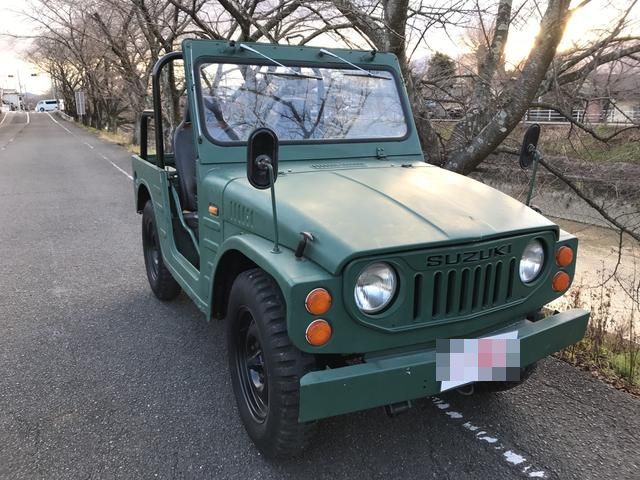
(Decent looking unit, although he needs new seat covers.)
So, yes, they come up for sale in Japan, but if you want to go two stroke Jimny, go for an SJ10 like mine, which I showed you pictures of in our previous posts:

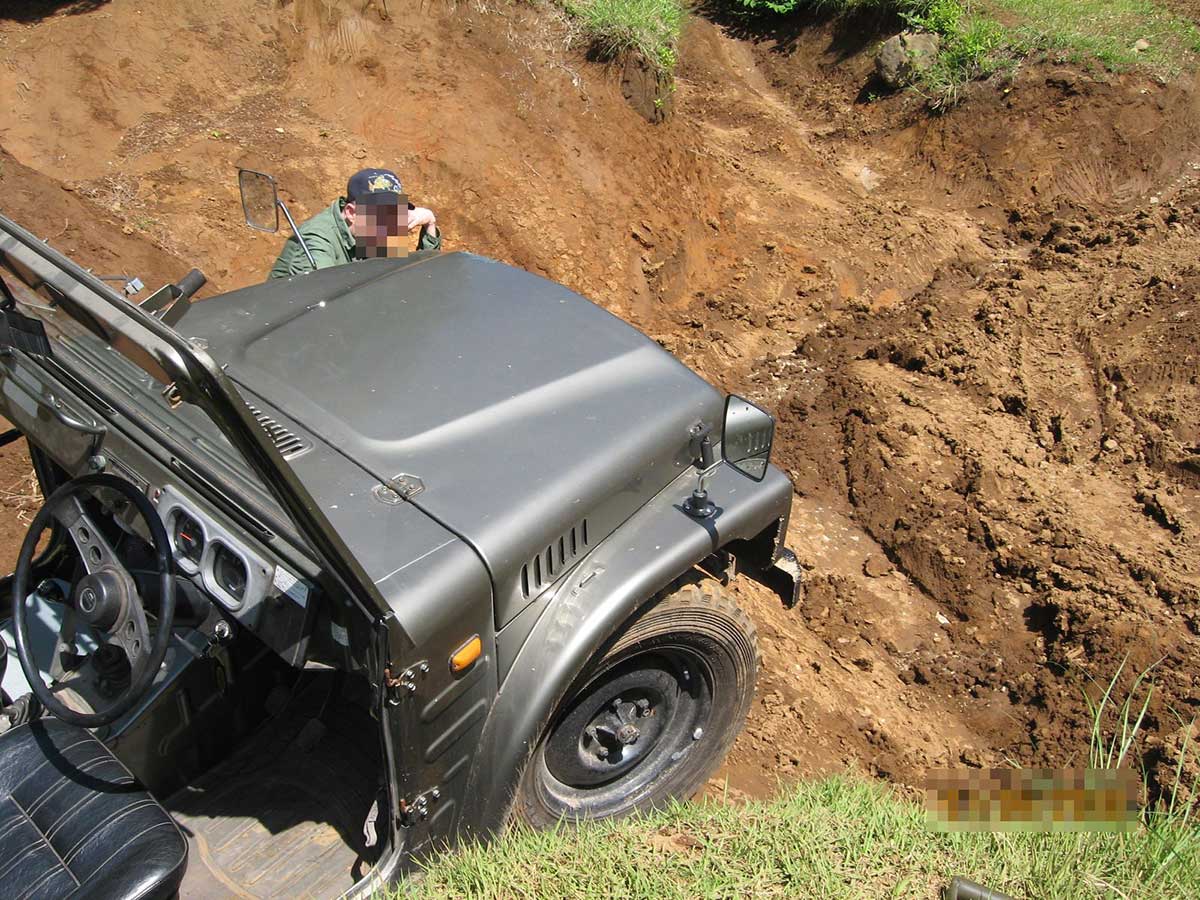
Or go for an SJ30. These have 550cc engines with three cylinders, the LJ50 engine. Much better than the old two-cylinder 360cc engines. And there are even guys who will rebuild these LJ50s for you. Take a look at this nice unit that came up at auction a couple of years back.
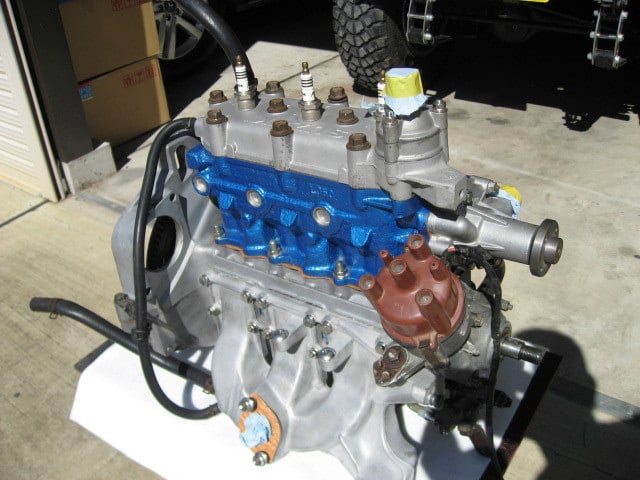
I just loved my SJ10 Suzuki Jimnys. There were the greatest cars off road, they were reliable and cheap to run, they were easy to fix, and they were just fun, fun, fun. Just be sure, before you start your drive off into the sunset in your SJ10 imported from Japan, that you have learned the quirks of starting a two-stroke engine: Cold start means cold, as in the engine has not run since last night. Full choke and a half pump of the pedal. If you parked the car this morning and you’re starting in the afternoon, this is NOT a cold start, so: Half choke and no pedal pumping. If the engine is warm (you’ve just finished a quick bit of shopping, or a fast pass through the beer store): Don’t touch the choke or the throttle, just turn the key and let him start by himself. Only if he seems to need a nudge do you give the pedal a wee touch of your foot. If you do anything other than this, you will flood the engine and soak the plugs. That’s why you always, ALWAYS!, carry a spare set of sparkplugs and the required wrench. Word to the wise.
Now, with these SJ10 Jimnys I’m not telling you that all power issues were solved. They were not. I found my first SJ10 Jimny to be still somewhat underpowered around town here in Japan and certainly not useable on the highway. So we did a full power tuning job with 1mm overbore, port tuning, full performance exhaust with chamber, free-flow muffler, etc. This raised power very nicely and, contrary to expectations, we did not need to “rob Peter to pay Paul” since we kept low end grunt while, at the same time, gaining significantly improved top end power. That engine was so much better that I even took the car on the highway a few times! Still and all, these old two-stroke Jimnys are not, and are never going to be, highway cruisers.
This is also true of the Jimny that came after the SJ10, namely the SJ30:
This is the car that, while keeping the LJ50 two-stroke engine, debuts the modern look Jimnys, like the JA71, JA 11, and JA12/22. Clear family resemblance, obviously.
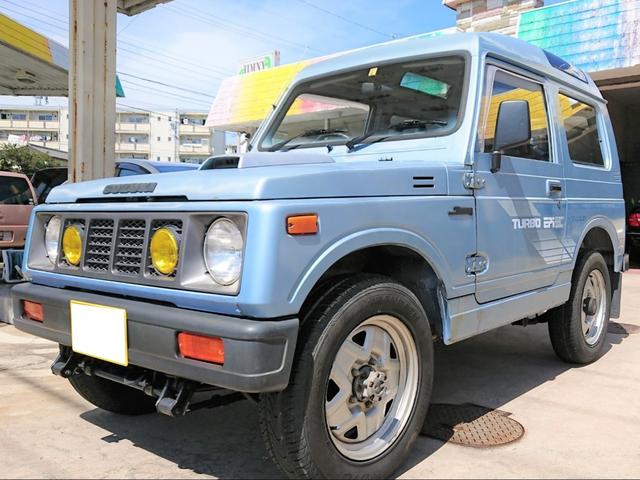
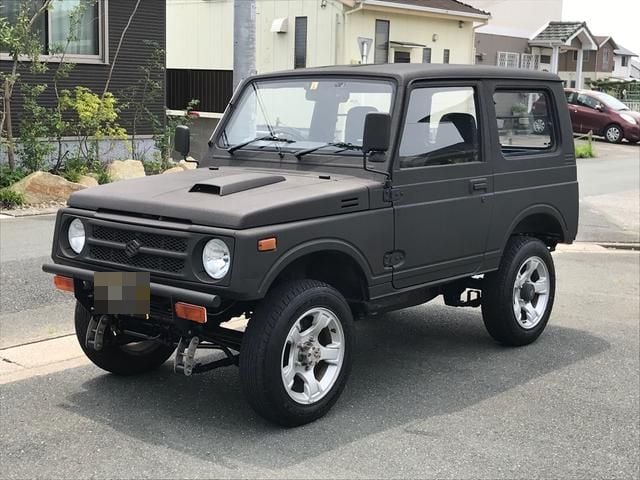
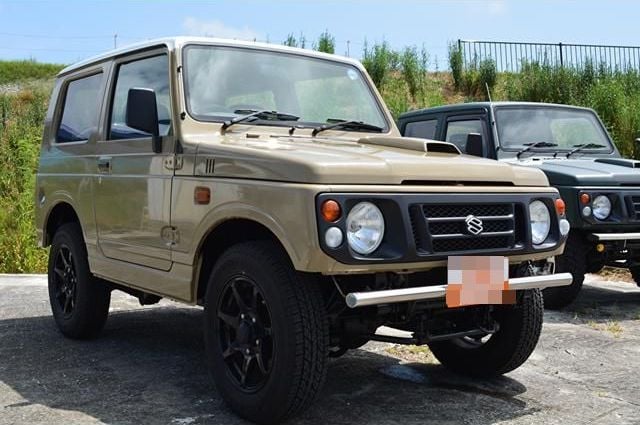
The Era of the Modern Jimny Dawns
What sets off these modern Suzuki Jimnys from the old days of two-stroke Jimnying is that the engines are now four-stoke units and they are turbocharged. But they are still, in the case of the Japanese Kei Class Jimnys that we are talking about here today, straight three engines.
(Browse our website for more information on Japanese Kei class vehicles, information about Kei Trucks, and about the very excellent Japanese Kei sports cars.
And don’t miss our four part series about Kei sports cars right on this blog.
I love these cars and will go on about them all day. They are cheap, reliable, practical, simple and fun transport.
“Modern” for Jimnys starts in January of 1986 with the JA71-I Jimny. The four stroke unit in this little off roader is the same size, 550cc, as the previous two-stroke three pot engines, but it’s now turbo-charged and giving you much more power at 42ps.
(Interestingly enough, the era of the two-stroke Jimny doesn’t come to an end with the dawn of the modern, four-stroke era, not at all. The two-stroke SJ30 continues in production until November of 1987. Those older units were so practical and simple and reliable that the old stick-in-the-mud farmers and forest service men stuck by preference with the two-stroke engines. Finally, the four strokes took over, though.)
Now, finally, with the JA71-I, do we have enough power? Well, no, actually. I’ve found that these cars are not adequate. The reason is this: The boost lag is so noticeable around town that you feel that, even mashing the pedal, not a lot happens and you’re not getting going and out of the way in time to feel safe. You see, that 42ps is not coming in until 6,000rpm, and your torque of 5.9kg/m is not coming on until 4,000rpm. Sure it’s more than the 5.3kg/m that my old SJ10 gave me, but….but, but, but: The SJ10 let me have that torque at a delightfully low 3,000rpm. So the JA71-I did not make me a happy camper in town. I did not take the car off-road (not my car), so I can’t say from experience about how it performs in 4WD low range. Maybe everything gets better. Maybe. But I can tell you that I have never seen the JA71-I used in an off-road competition here. My guess is that they are less than adequate and should be left alone if you are thinking of buying and importing a used Jimny from Japan.
The Dawn Brightens
But things get better with the arrival of the JA71-III, way better. What happened? Well, Suzuki put an intercooler on the little turbo unit and power went up to 52ps and came in a bit earlier at 5,500rpm. Torque is now 7.2kg/m at 4,000rpm. The improvement is notable and these cars are much better around town and off road. I’ve seen JA71-IIIs compete very effectively in the races and I’m told that they can handle, just handle, the highway; although one JA71-III owner told me: “Oh yeah, it can do it….but it’s killing.”
JA11 All The Way
The JA11 is really the quintessential Jimny of modern times. The one I had for many years was an excellent performer both on and off road. The engine, the fabled F6A, is now 660cc for the Kei class units and power is finally not a problem, with 58ps at 5,500rmp and 8.8kg/m of torque at a nice, low 3,500rmp. We are now happy campers.
If you are looking for a clean second hand Suzuki Jimny from Japan bought either from a used car dealer or at the Japanese used car dealer auctions, the JA11 is the Jimny I recommend. Mine was reliable (except for the turbo that I blew due to my own stupidity, not the car’s fault in any way) and cheap to run. And, you know something about that JA11? He was highly maneuverable with responsive handling and nimble cornering. Quite amazing, actually. There was this time I’d had a few too many to drink and took him out to the fields behind the house (nobody out there but deer and bugs and wild boar) and had a wild whip round. That car really held on and was like a little sports car. I was really surprised at the handling when I pushed it. It was maybe a bit stupid to do it, but it was fun. And if you can’t horse around and have fun in a deserted spot, what’s the point of anything? And a JA11 Jimny is certainly the 4wd car to get you out into the deserted wilds and under God’s own sky, away from the disapproval of all the old biddies and sourpuss toads that seem to be closing in around us more and more, year by year. Get away from them all; get a Jimny.
The JA11 came out in March of 1990 and production ended in November of 1995. These cars are available for easy import to the USA and Australia under their 25 year-old used car import rules. So if you are thinking: “I want to import a Jimny to America.” Think no further than the JA11.
For guys in the UK, Canada, or the EU, newer models like the JA12/22 Jimny can be had for easy self import. These cars are better than the JA11, yes and no. The JA12 has the same F6A engine as the JA11, but now you’re getting a very nice 64ps at 6,000rpm and good torque of 10kg/m, although it’s coming in at a slightly higher 4,000rpm. The JA22 uses the newer K6A, and that’s an altogether racier unit (64ps, official, at 6,500 and 10.5kg/m at 3,500) with an aluminum block, a four valve head, and a timing chain, rather than timing belt. Both these engines have many power tuning options and also crawler turbo kits for a more hardcore off-road focus. Ultimately, the F6A will yield a bit more power at the extreme end of tuning due to the stronger iron block, but the K6A is no slouch. The difference in peak power potential before you bust the thing is only about 10ps from what I have been told.
The real difference between the JA12/22 and the earlier JA11 is in the suspension: coils springs on the 12/22, leaf springs on the 11. I used to be one of the guys that said: “Off road? Leaf all the way, Dude.” Now, having driven coils off road more and more these days, I’m not so sure. Certainly, for on road, I now come down more and more on the side of coils. Maybe I’m just aging, but it seems to me that light weight is even more important than suspension types for good off-road performance, and in this area a JA12/22 or a JA11 are both winners; both light, highly capable 4WD vehicles.
Any Suzuki Jimny will be in Granville King’s Class I grouping, and I’m sure that, were he with us today and reviewing these cars for us using his “Off Road Capability Standard” scale of 1 to 5, he’d give any Jimny a solid 5.




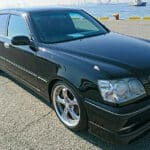




 LiveSupporti
LiveSupporti
Great article. I wish you’d touched on the 1.3l engines a bit too though.
Thank you!